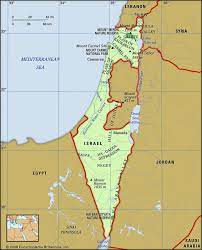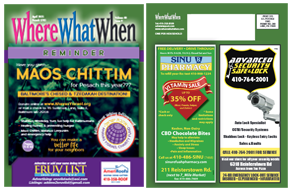
For some time, I have been a subscriber to an email group called “Avira d’Eretz Yisroel” (loosely translated as “the holy atmosphere of the Land of Israel”). There, and on his website, www.aviraderetzyisroel.org, Yoel Berman promotes successful “chareidi” aliyah from North America by educating and informing his readership about communities, old and new, that are appropriate for American bnei Torah and their families – a goal that he shows to be practical, attainable, and worth striving for. If you’re a regular reader of the Where What When, you’ve probably seen some of his articles featured in these pages.
Now, Reb Yoel, who himself
made aliyah from Los Angeles, has published a book, Living in the
Land. The book gives you all that education and
information – then ices the cake with the inspiration and empowerment to take
the plunge. The beautiful cover (painted by Yehoshua Wiseman) immediately sends
a subliminal message about the colorful spectrum of Israel’s Jewish population.
Yet, statistics show that aliyah from
the “black hat” demographic of Anglo Jewry – and from the United States in
particular – is underwhelming. This book aims to turn the tide.
Personally, I am hyper-sensitive to the slightest whiff
of if-I-made-aliyah-you-can/should-too.
No one knows enough about what’s going on in another person’s life to tell them
where they should be when. While the book does contain a bit of that attitude,
its overriding objective is to whet the reader’s appetite to live in the Land
and to help them follow through.
To that end, Reb Yoel introduces us to 50 chareidi families who pursued their
dream (or didn’t even know they were dreaming until their dream came true!) and
are now blossoming and growing on holy soil. To read their stories is to
celebrate their accomplishments even if, for now, we are only living
vicariously through them. For those who are not yet dreamers, these stories
might inspire them to dream. For those who have been dreaming, these stories
might inspire them to act. And for those who are already in the process, these
stories will surely give them that extra shot in the arm to keep their eyes on
the prize and fight the forces that are bound to try to hold them back. Even
those who are already settled and perhaps starting to take their aliyah for granted would do well to read
this book and renew their appreciation of the brave, life-changing decision
that they have made.
The author divides his storytellers by their location.
Appropriately, the first chapter is “The City of Yerushalayim.” But
Yerushalayim is not for everyone’s budget or lifestyle, so Reb Yoel brings us
to communities “A Short Ride Away” from the holy city. One stop along the tour
is the yishuv (settlement) of Maale Amos, from where former Baltimorean
Shoshana Weinberg shares her aliyah
story. Then we read about the rest of “A Very Beautiful Country,” in which
section I was pleased to see my children’s new hometown of Afula well
represented.
Regardless of where in Israel one is heading, aliyah is never “easy,” whether
logistically, financially, physically, emotionally, or socially – and sometimes
all of the above. But as we know, it is not meant to be easy. Our sages from
time immemorial have told us that one “acquires” the Land through the trials
and tribulations of the effort invested. Those who undertake that effort pray
that where there is the will, Hashem will provide the way. More often than not,
His kind, compassionate, helping hand is apparent, as we see in so many of these
stories.
But this book is not just “storytime with Reb Yoel and friends.”
The final section describes and provides contact information for numerous
organizations to help plan and execute a successful chareidi aliyah. These
essential resources and the opportunities they offer did not exist when we
moved to Israel in 1997. I can’t help but wonder where we would be now if they
had been available to us then.
One of my favorite vignettes in the book was written by a
Breslover chasid. He explains that “There is an important teaching of Rebbe
Nachman (of Breslov) to keep in mind: The middah (character
trait) of arichus apayim (patience) is a prerequisite for
being zocheh to (merit) Eretz Yisrael.... Be excited, but don’t
jump into things; you must have bitachon (trust, based on
faith) but be careful and calculated.”
Those (and many other) wise words of advice in this work
might ring true anywhere on the planet. But the rewards for those who heed them
in order to find their place in Eretz Yisrael are astronomically greater than
outside Israel. Living in the Land is a glimpse into exactly
that, and it’s worth every minute of the read.
In his preface, Reb Yoel asks that “if you would like to
share your own thoughts and experiences for a future volume…please email me….”
May we all merit to be featured in future volumes of Living in the
Land – until there is no Jew left in chutz la’Aretz (outside
the Land) to need the inspiration and information therein.
Living in the Land can be found in bookstores in
Israel and the U.S. or ordered online at mosaicapress.com/product/living-in-the-land/.
This review first appeared on Remember Jerusalem (www.rememberjerusalem.blogspot.com).
If you would like to be subscribed to rememberjerusalem, please email
sharongalkin@gmail.com.






